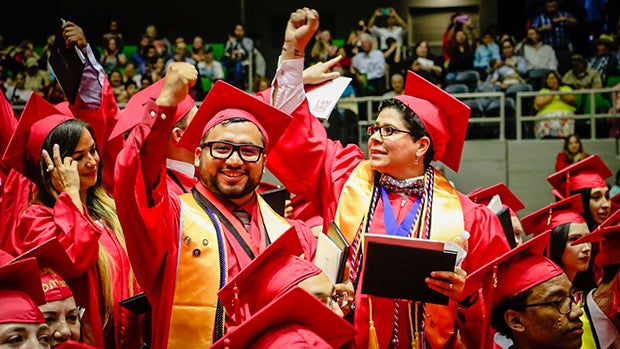For all their differences, both President Obama and Republican Senator Marco Rubio agreed on one thing last Tuesday night: the growth of the middle class and economic recovery in this country are intrinsically linked, and higher education and job training offer the keys to the middle class. You’ve probably heard it before: we need to do a better job in this country of equipping graduates with the skills they need to fill the jobs that are available. At the same time all citizens need to have access to affordable higher education and training.
Research shows that there are about two million jobs in the United States today going begging because Americans don’t have the skills needed to fill those jobs. If domestic and multinational corporations are to fill those jobs here in the U.S. rather than moving them overseas, two things will need to be done.
First, colleges and universities must better align the education and training they provide with the skills needed to fuel economic recovery. As the president noted, many of those skills are in science, technology, engineering, and math — the STEM fields.
Last year, a story on NPR provided a good example of the challenge. Thousands of computer-related jobs in the high-tech Seattle area are going unfilled despite the fact that qualified students are clamoring to get into computer science and computer engineering programs at the University of Washington. How is this possible? Because while the University of Washington has an undergraduate program designed to train and place students in this field, that program has not been expanded since 1999 even though the number of high-tech jobs has exploded. Good jobs and eligible students make for what might seem like a perfect match, but there is log jam: Students can’t access the training that they need to be prepared for those jobs.
At the University of Washington and many other public institutions of higher education, this lamentation is often heard: We don’t have enough resources to expand programs, particularly in areas such as technology and health care that are especially costly to run. How can we fix that? Start by creating government incentives for institutions to deliver more education for high-demand, high-wage jobs. At the same time, it is imperative that institutions themselves consider how to realign existing resources so that students are being prepared for the jobs of today and tomorrow. Maybe that means shifting funds from programs and courses completely disconnected from good employment outcomes, and beefing up the ones that data show lead to solid jobs and are shown to increase the kind of critical thinking and technical skills needed for employment.
In fact many colleges around the country that are aligning what they provide to existing jobs. Notable among them are community colleges like Walla Walla Community College in Washington State and Lake Area Technical Institute in South Dakota and Brazosport College in Texas, working to train students for jobs in the petrochemical industry, wind energy and nursing. Graduates from each of these colleges earn wages that far exceed the wages of other workers in the area. This strong alignment between education and available jobs helped land each of these colleges on the list of Top Ten Finalists for the Aspen Prize for Community College Excellence.
Second, just because colleges offer strongly aligned programs doesn’t mean that students will select them. Following up on the president’s State of the Union promise, the White House released its interactive “college score card.” It is something that the Department of Education has been working on since last year and the idea behind it is exactly right. Students need to understand which of the programs they can choose will actually provide them with a strong chance of graduating with job ready skills.
Today, students are not routinely choosing colleges with those factors in mind. Research has shown that many students “under-match,” meaning they choose to attend a college with significantly lower graduation rates than one that would have accepted them and has better student outcomes. And, students generally don’t have information that allows them to align their choices with the greatest chance of post-graduation employment and earnings. In other words, they don’t know whether they are getting the biggest bang for their education buck.
If colleges are to offer stronger program options, students and their families must begin to demand those programs in larger numbers. For this reason providing consumers better information about higher education outcomes, as both President Obama and Senator Rubio advocated in their comments Tuesday, will be critical to better alignment.
We could start by lifting the federal ban on a student unit record system, which has been in place for five years and prevents everyone from fully understanding what in fact happens to students after they begin college. Then, linking college records to wage information would help students, families and colleges themselves understand whether students actually receive the education and skills they need for strong employment opportunities, for jobs with good wages.
This is not to say that all higher education should be tied to specific jobs. The rigorous education many liberal arts programs provide can lead to the kind of strong critical thinking ability demanded by employers, and provide students with skills that will transfer to several different jobs over a lifetime. But students in liberal arts programs hope to land good jobs too, and measuring how often they complete degrees and earn strong wages can help signal where to improve higher education.
We are entering an era of higher education reform, where we will increasingly look more at the impact of a college education and not just how many students are enrolled. Both President Obama and Senator Rubio seem to understand that the shift needs to continue if higher education is going to do all it can to help rebuild the middle class.
This blog is crossposted with the Huffington Post.

